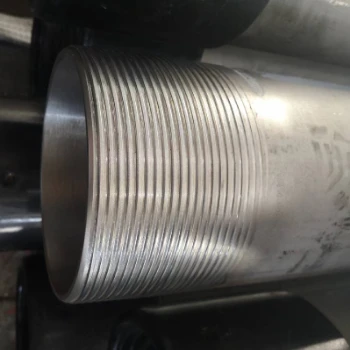- Afrikaans
- Albanian
- Amharic
- Arabic
- Armenian
- Azerbaijani
- Basque
- Belarusian
- Bengali
- Bosnian
- Bulgarian
- Catalan
- Cebuano
- Corsican
- Croatian
- Czech
- Danish
- Dutch
- English
- Esperanto
- Estonian
- Finnish
- French
- Frisian
- Galician
- Georgian
- German
- Greek
- Gujarati
- Haitian Creole
- hausa
- hawaiian
- Hebrew
- Hindi
- Miao
- Hungarian
- Icelandic
- igbo
- Indonesian
- irish
- Italian
- Japanese
- Javanese
- Kannada
- kazakh
- Khmer
- Rwandese
- Korean
- Kurdish
- Kyrgyz
- Lao
- Latin
- Latvian
- Lithuanian
- Luxembourgish
- Macedonian
- Malgashi
- Malay
- Malayalam
- Maltese
- Maori
- Marathi
- Mongolian
- Myanmar
- Nepali
- Norwegian
- Norwegian
- Occitan
- Pashto
- Persian
- Polish
- Portuguese
- Punjabi
- Romanian
- Russian
- Samoan
- Scottish Gaelic
- Serbian
- Sesotho
- Shona
- Sindhi
- Sinhala
- Slovak
- Slovenian
- Somali
- Spanish
- Sundanese
- Swahili
- Swedish
- Tagalog
- Tajik
- Tamil
- Tatar
- Telugu
- Thai
- Turkish
- Turkmen
- Ukrainian
- Urdu
- Uighur
- Uzbek
- Vietnamese
- Welsh
- Bantu
- Yiddish
- Yoruba
- Zulu
tubing and casing
Understanding Tubing and Casing in Oil and Gas Production
In the oil and gas industry, the extraction of hydrocarbons from the earth's crust is a complex process that relies heavily on the use of specialized equipment, among which tubing and casing are critical components. These two elements, though different in function and design, play a crucial role in ensuring the safety, efficiency, and effectiveness of oil and gas wells.
Casing The Structural Backbone
Casing is a series of hollow pipes that are installed in the wellbore to provide structural support, prevent the walls of the borehole from collapsing, and isolate different pressure zones within the earth. Typically made from carbon steel, the casing is designed to withstand the harsh environments faced during drilling and production. It serves several vital functions
1. Well Integrity Casing ensures that the well remains open, preventing collapse and allowing for the safe extraction of hydrocarbons. It forms a barrier that keeps fluids contained within designated sections, thus protecting groundwater and other formations from contamination.
2. Pressure Control Different geological formations below the earth's surface have varying pressure levels. Casing helps manage these pressures, reducing the risk of blowouts, which can occur when there is an uncontrolled release of oil, gas, or water from the well.
Casing is installed in multiple layers, with each layer serving a specific purpose. The surface casing is the first to be installed and extends from the surface down to a designated depth, while production casing is placed within the section that contains oil or gas deposits. In some cases, additional casing layers may be added to better suit the geological conditions and production requirements.
tubing and casing

Tubing The Transport System
While casing protects the wellbore and controls pressure, tubing serves as the conduit through which oil and gas are transported from the reservoir to the surface. Tubing is smaller in diameter than casing and is positioned inside the production casing. Typically constructed from specialized steel alloys, tubing is engineered to handle both the flow of hydrocarbons and the high pressures prevalent in production environments.
1. Fluid Flow Tubing allows for the efficient flow of fluids, enabling the extraction of hydrocarbons and their transportation to the surface processing facilities. It is designed to optimize flow rates and minimize friction losses, which are critical for maintaining production efficiency.
2. Control and Maintenance Tubing systems often incorporate various components, such as pumps and valves, that allow operators to control the flow of hydrocarbons actively. This flexibility is essential for orchestrating production operations and responding to changes in reservoir conditions.
3. Well Intervention When maintenance is needed, or issues arise within the well, tubing can be easily removed and replaced without the need to disturb the casing, allowing for efficient intervention and repairs.
Conclusion
In summary, tubing and casing are indispensable elements in the oil and gas production process. Casing provides the structural integrity needed for safe well operation, while tubing serves as the pathway for hydrocarbon transport to the surface. Together, they ensure not only the efficiency of operations but also the safety and environmental protection critical to sustainable energy production. Understanding their roles and the technologies surrounding them enables better decision-making in the field, ultimately leading to more effective hydrocarbon extraction and management.
-
Tubing Pup Joints: Essential Components for Oil and Gas OperationsNewsJul.10,2025
-
Pup Joints: Essential Components for Reliable Drilling OperationsNewsJul.10,2025
-
Pipe Couplings: Connecting Your World EfficientlyNewsJul.10,2025
-
Mastering Oilfield Operations with Quality Tubing and CasingNewsJul.10,2025
-
High-Quality Casing Couplings for Every NeedNewsJul.10,2025
-
Boost Your Drilling Efficiency with Premium Crossover Tools & Seating NipplesNewsJul.10,2025







